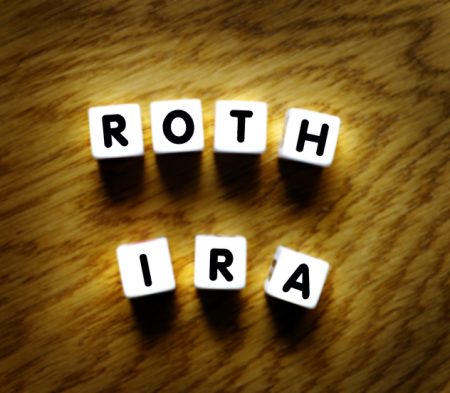When you inherit an individual retirement account (IRA), it comes with a set of rules that dictate how and when you must take distributions. Knowing which rules apply to you can help you avoid unnecessary taxes or penalties. It can also help ensure that you make the most of your inheritance. The IRS has specific guidelines for inherited IRA required distributions. However, these can vary, depending on your relationship to the deceased, the type of IRA and the year of death.
A financial advisor can help you understand inherited IRA distribution rules and create a withdrawal strategy that reduces your tax burden.
Distribution Rules for Inherited IRAs
This is a breakdown of the key rules concerning inherited IRA distributions, including the exceptions, penalties and tax implications you need to know.
The 10-year rule is one of the most significant changes from the SECURE Act. It applies to most non-spouse beneficiaries who inherit an IRA from someone who died in 2020 or later. Under this rule, the beneficiary must fully withdraw all assets from the inherited IRA by the end of the 10th year after the account owner’s death. If the original owner had not yet started taking RMDs, there are no annual distribution requirements as long as there is full distribution by year 10. However, if RMDs had begun, annual distributions are a requirement during the 10-year period. Spouses and certain eligible designated beneficiaries are exempt from the 10-year rule and can stretch distributions over their lifetimes. For example, say you are a non-spouse beneficiary who inherits a traditional IRA in 2025. If the original owner was already taking RMDs, you must begin taking annual distributions and deplete the account by 2035.
RMDs for inherited IRAs follow different rules depending on the type of beneficiary. Spouses who inherit an IRA may roll it into their own IRA. They can also choose to remain the beneficiary and begin taking RMDs when the original owner would have turned 73. Non-spouse beneficiaries subject to the 10-year rule may still need to take annual RMDs if the original IRA owner had already started taking them. The annual amount is based on the beneficiary’s life expectancy, but the account must still be emptied within the 10-year window. Failure to meet the inherited IRA required distribution rules could trigger a penalty of up to 25% on the amount you should have withdrawn. Eligible designated beneficiaries are not subject to the 10-year rule. These include: These beneficiaries can typically use the stretch IRA strategy, allowing them to take distributions based on their own life expectancy. This can result in lower annual withdrawals and reduced tax impact. Once a minor child turns 21, the 10-year rule begins to apply. The remaining account balance must then be distributed within the next 10 years. Roth IRAs have different rules when it comes to inherited IRA required distributions. While Roth IRA owners are not subject to RMDs during their lifetime, beneficiaries must still follow the 10-year rule upon inheritance. Spouse beneficiaries can treat an inherited Roth IRA as their own and avoid RMDs entirely. Non-spouse beneficiaries, however, must empty the account by the end of the tenth year following the original owner’s death. Distributions from Roth IRAs are typically tax-free, provided the account has been open for at least five years. Traditional inherited IRA distributions are generally taxed as ordinary income in the year they are taken. This can push beneficiaries into a higher tax bracket, especially if large distributions are made all at once. To minimize taxes, you could spread withdrawals from the inherited IRA over several years or time them during lower-income years. Converting part of the inherited IRA to a Roth is another option, but this is a taxable event that will increase your income and taxes in the year of conversion. Qualified Roth IRA distributions are tax-free, which can make them useful for long-term tax planning despite the upfront tax cost. The IRS imposes penalties for failing to follow inherited IRA required distribution rules. If you miss an RMD, the penalty is 25% of the amount you did not withdraw. However, if you correct the mistake within two years, the penalty may shrink to 10%. To avoid this, make sure to track your inherited IRA deadlines carefully. This is especially important if multiple beneficiaries are involved or if the original owner died late in the calendar year. Beyond understanding the basic rules, beneficiaries can use these strategies to withdraw from their inherited IRAs to support their broader financial goals. The earlier you plan, the more flexibility you will have in how you use the funds. Thoughtful distribution strategies can preserve more of the inheritance for your future needs. Inherited IRA required distribution rules can be confusing, especially after changes introduced by the SECURE Act and SECURE Act 2.0. Whether you are a spouse, a non-spouse beneficiary or part of an exception group, understanding your obligations is essential to preserving your inheritance and avoiding costly mistakes. While the 10-year rule and RMD guidelines form the foundation of these rules, there are numerous nuances that can affect your decision-making. Photo credit: ©iStock.com/Cecilie_Arcurs, ©iStock.com/DMP, ©iStock.com/LaylaBird Read the full article here10-Year Rule

Required Minimum Distributions (RMDs)
Exceptions
Roth IRAs
Tax Implications
Penalties
Planning Strategies for Inherited IRAs
Bottom Line

Estate Planning Tips









